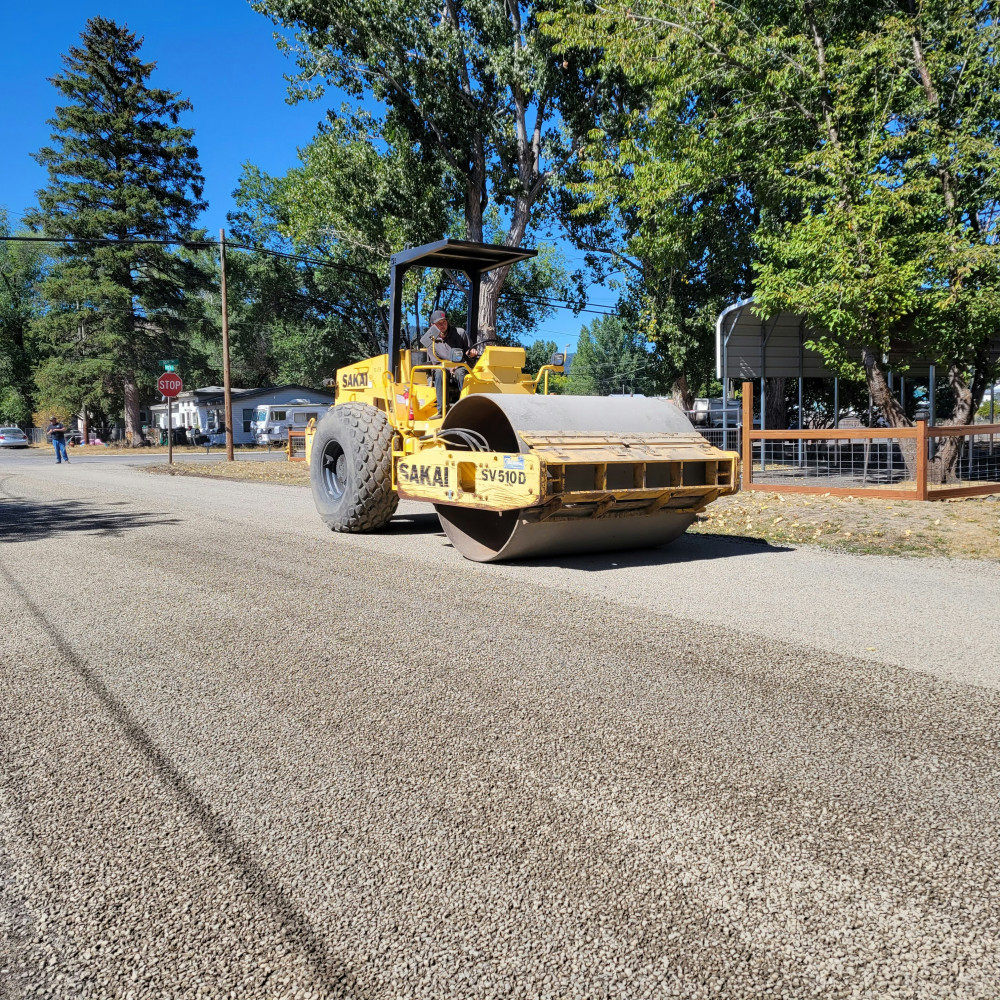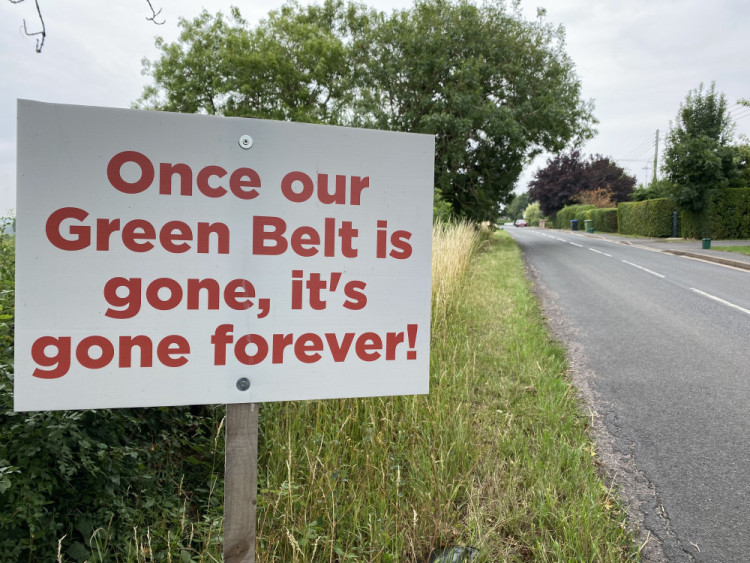What groundworks are needed before laying a new driveway?
By Karl Hancock 27th Oct 2025
By Karl Hancock 27th Oct 2025

Embarking on a new driveway project is a significant investment for any homeowner.
While the final surface - whether it's sleek resin, classic block paving, or durable tarmac - is what catches the eye, the true longevity and performance of your driveway depend entirely on the quality of the groundwork beneath it.
Rushing this crucial phase is a common mistake that can lead to costly issues like cracking, sinking, and poor drainage.
This guide will walk you through the essential groundwork stages required for a successful and long-lasting driveway from Kane Construction, ensuring you understand every step of the process, from initial site preparation to the final bedding layer.
The All-Important Planning and Initial Site Assessment
Before a single spade enters the ground, thorough planning is paramount. The first step involves a comprehensive site assessment to understand the unique characteristics of your property.
- Existing Surface and Ground Conditions: An initial survey will determine if an old surface needs to be removed and assess the underlying soil type. Clay soil, for example, is less permeable and will require different drainage considerations than a more free-draining sandy soil.
- Regulations and Permission: In the UK, new driveways larger than five square metres must comply with Sustainable Drainage Systems (SUDS) regulations. This means that surface water must not run off onto public roads. The design of your groundwork must include a permeable surface or a drainage solution, such as a soakaway or channel drains, to manage rainwater within your property's boundary.
Site Clearance and Excavation
Once the planning is complete, the physical work begins with clearing and excavating the site. This stage sets the foundation for everything that follows.
- Marking Out the Area: Use a string line and stakes to accurately mark the exact dimensions of your new driveway. This ensures the final layout is precise and as per your design.
- Removing the Existing Surface: Any old surface, such as grass, gravel, or a worn-out tarmac, must be completely removed. This top layer is unstable and cannot support a new driveway.
- The Right Depth: The excavation depth is critical and depends on the final surface material. A typical depth for a domestic driveway is between 250mm and 300mm. This depth accounts for the sub-base, bedding layer, and the final surface material, ensuring everything sits flush with the surrounding ground level.
- The Geotextile Membrane: After excavation, a permeable geotextile membrane is often laid at the bottom of the trench. This fabric serves two vital purposes: it prevents the sub-base aggregate from mixing with the underlying soil, and it acts as an effective weed barrier, preventing future growth from penetrating the surface.
Installing a Robust Drainage System
Proper drainage is arguably the most critical element of the groundwork. Without it, your driveway will be susceptible to pooling water, frost damage, and structural instability.
- Understanding SUDS: As mentioned, SUDS is a legal requirement in the UK. This system mimics natural drainage, and there are several ways to implement it.
- Permeable Surfaces: One of the most effective solutions is using a permeable surface material like block paving or porous resin. These materials allow water to filter directly through the surface and into the sub-base below.
- Channel Drains: For non-permeable surfaces like concrete or tarmac, installing channel drains (also known as linear or trench drains) is essential. These grated drains are installed across the driveway's surface to capture water run-off and redirect it away from the property.
- Soakaways: The captured water from channel drains is often directed into a soakaway. This is a large underground crate or reservoir designed to collect and hold rainwater, allowing it to slowly disperse into the surrounding ground without overwhelming the public drainage system. A soakaway must be located at least five metres from any building.
- Natural Fall: Where possible, the driveway should be designed with a slight gradient (a fall of 1:40 is recommended) to encourage surface water to naturally drain towards a designated permeable area, such as a garden bed or a gravel trap.
The Sub-Base: The Driveway's Backbone
The sub-base is the load-bearing foundation that provides stability and prevents the driveway from sinking or shifting under the weight of vehicles.
- Choosing the Right Aggregate: The most common and recommended material for a sub-base in the UK is an aggregate known as MOT Type 1. This is a crushed stone material (typically limestone or granite) that contains a mixture of stone sizes from 40mm down to a fine dust. When compacted, this mixture locks together to create a dense, stable, and strong foundation. For driveways with a focus on drainage, an MOT Type 3 aggregate, which has a lower fine content, may be used as it allows water to pass through more freely.
- The Right Depth: For a standard domestic driveway, a minimum sub-base depth of 150mm is recommended. In areas with poor soil conditions or for driveways that will see heavier use, a depth of 200mm or more may be necessary.
- Compaction is Key: Compacting the sub-base is a non-negotiable step. The aggregate should be laid in layers of no more than 100mm and compacted thoroughly using a vibrating plate compactor (often called a 'wacker plate'). This process removes air pockets and ensures the material is tightly interlocked, creating a solid and unyielding base.
The Bedding Layer
After the sub-base has been laid and compacted, the final groundwork stage is to prepare the bedding layer, which provides a cushioned and perfectly level surface for the final paving.
- The Material: A fine, sharp sand, sometimes referred to as 'grit sand' or 'coarse sand,' is the ideal material for this layer. It is free-draining and provides the perfect base for laying paving units. It's crucial to avoid building sand, which is not suitable as it retains water and lacks the necessary structural integrity.
- Depth and Screeding: The bedding layer is typically spread to a depth of 25-40mm. This layer needs to be perfectly level to ensure a smooth final surface. A technique called 'screeding' is used for this, where a long, straight-edged timber or metal bar is pulled across the sand to scrape off the excess and leave a uniform, flat surface.
Conclusion
The groundwork for a new driveway is a multi-layered process that requires precision, the right materials, and an understanding of the site's unique needs.
From meticulous excavation and strategic drainage planning to the careful laying and compaction of the sub-base, each step is critical to the final outcome.
By ensuring these groundworks are carried out to the highest standard, you can be confident that your new driveway will not only look fantastic but will also remain a durable, stable, and valuable asset to your home for many years to come.
CHECK OUT OUR Jobs Section HERE!
warwick vacancies updated hourly!
Click here to see more: warwick jobs
Share:


















